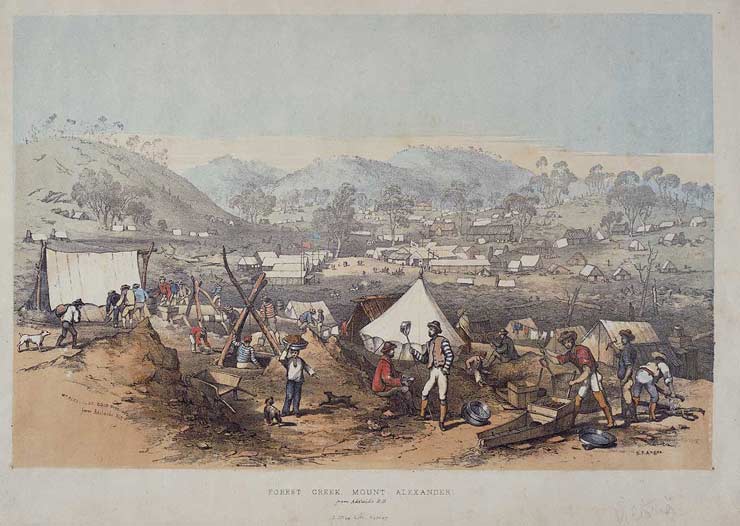 Forest Creek, Mount Alexander, 1852
Forest Creek, Mount Alexander, 1852
TLF ID R3038
This is a hand-coloured lithographic print prepared by John Allen in 1852 from a drawing by George French Angas. The lithograph, with text, measures 26 cm x 35.5 cm and shows Forest Creek at the Mount Alexander gold diggings in central Victoria.
